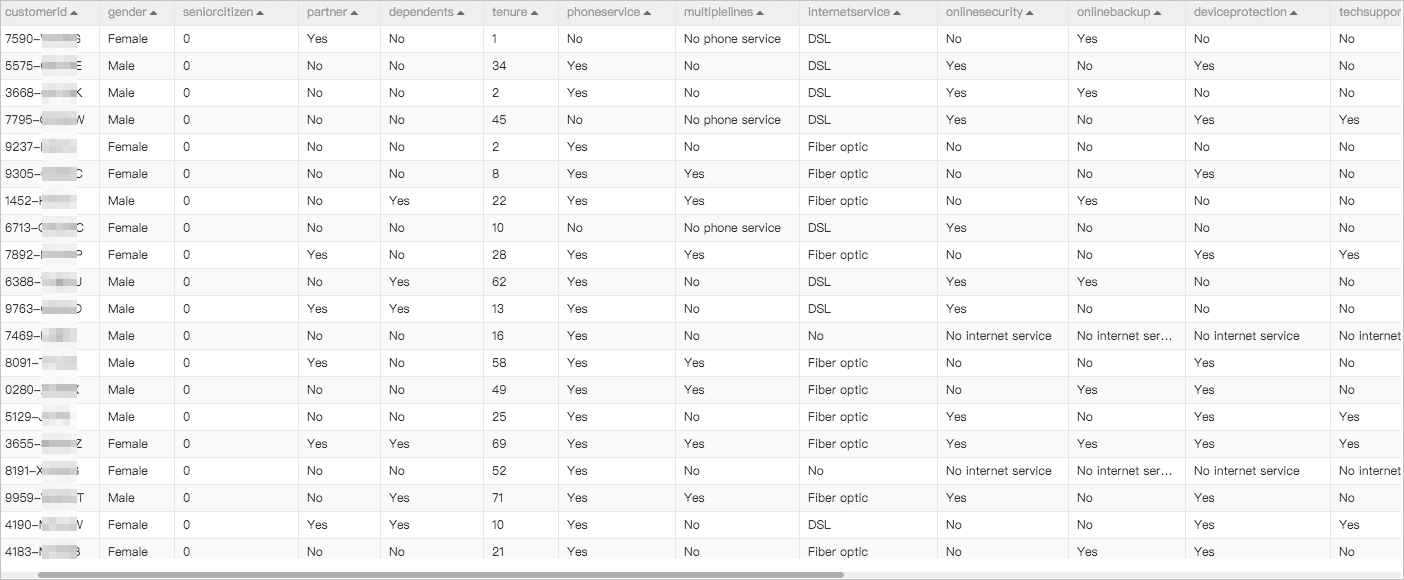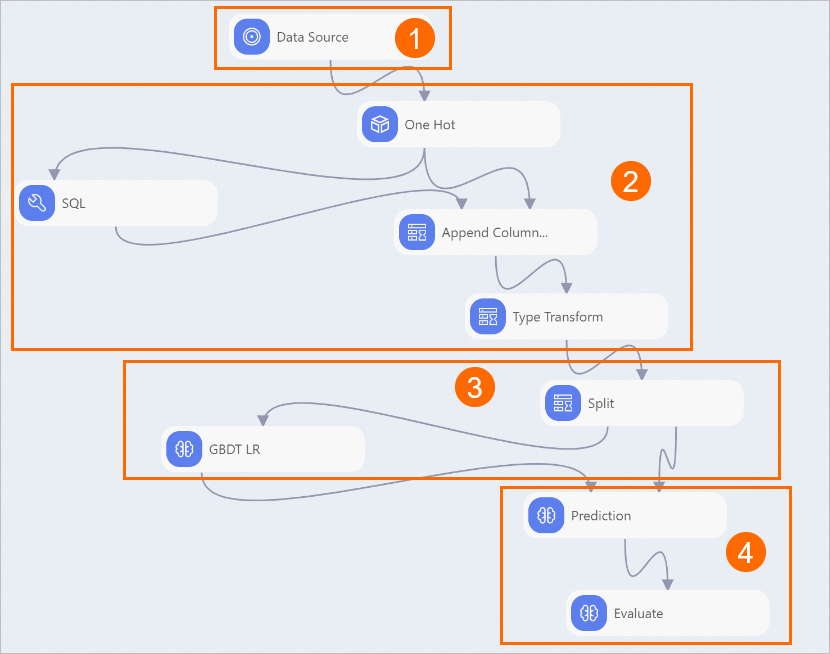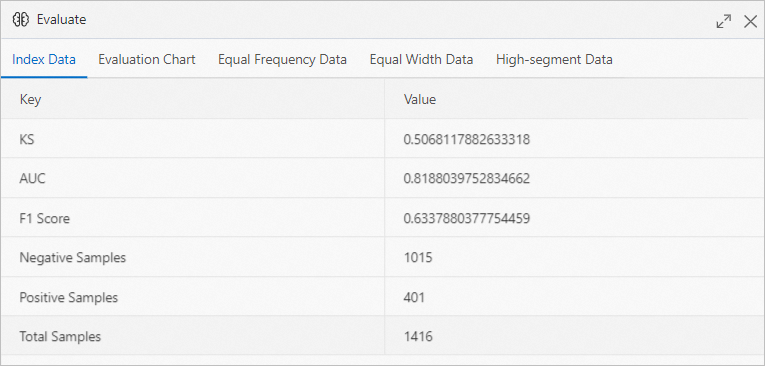This topic describes how to use the user feature algorithm that is provided by Machine Learning Platform for AI (PAI) to create a model to monitor user churn.
Background information
How to increase the user base and retain existing users is key to business growth. You can use risk control models to identify likely-to-churn users and take measures to prevent these users from churning.
Mainstream solutions for monitoring user churn are based on rules and are not intelligent enough to accurately mine likely-to-churn users.
Solutions
PAI provides a comprehensive solution to implement feature encoding, classification model training, and model evaluation based on labeled data. The following conditions must be met before you can use this solution:
- You master basic modeling knowledge.
- You can be fully engaged in the development for one to two days.
- You have more than 1,000 labeled data records that show the characteristics of situations in which users churn.
Datasets
The pipeline described in this topic uses masked real data that is collected from a telecommunications platform. The entire dataset contains 7,043 data records, including the basic information and churn status of each user. The following figure shows the sample data that is used in the pipeline.
 The following table describes the fields in the dataset.
The following table describes the fields in the dataset.
The following table describes the field in labeled data.
 The following table describes the fields in the dataset.
The following table describes the fields in the dataset.
| Field | Description |
|---|---|
| customerid | The ID of the user. |
| gender | The gender of the user. |
| SeniorCitizen | Specifies whether the user is a citizen. Valid values:
|
| Partner | Specifies whether the user has a partner. |
| Dependents | Specifies whether the user is affiliated. |
| tenure | The duration for which the user is served by the service provider. |
| PhoneService | Specifies whether the user subscribes to mobile phone services. |
| MultipleLine | Specifies whether the user uses multiple lines of services. |
| InternetService | The Internet service to which the user subscribes, such as DSL or Fiber optic. |
| OnlineSecurity | Specifies whether the user faces Internet security issues. |
| OnlineBackup | Specifies whether the user has access to online support. |
| DeviceProtection | Specifies whether the user has access to service protection. |
| TechSupport | Specifies whether the user has applied for technical support. |
| StreamingTV | Specifies whether the user has access to streaming TV programs. |
| StreamingMovies | Specifies whether the user has access to streaming movies. |
| Contract | The contract period, such as Month-to-month or Two year. |
| PaperlessBilling | Specifies whether the user receives electronic bills. |
| PaymentMethod | The payment method used by the user. |
| MonthlyCharges | The monthly expenses of the user. |
| TotalCharges | The total expenses of the user. |
| Field | Description |
|---|---|
| churn | Specifies whether the user churns. |
Procedure
- Go to the Machine Learning Designer page.
- Log on to the Machine Learning Platform for AI console.
- In the left-side navigation pane, click Workspaces. On the Workspace list page, click the name of the workspace that you want to manage.
- In the left-side navigation pane, choose to go to the Machine Learning Designer page.
- Create a pipeline.
- Run the pipeline and view the results.

 The closer the
The closer the